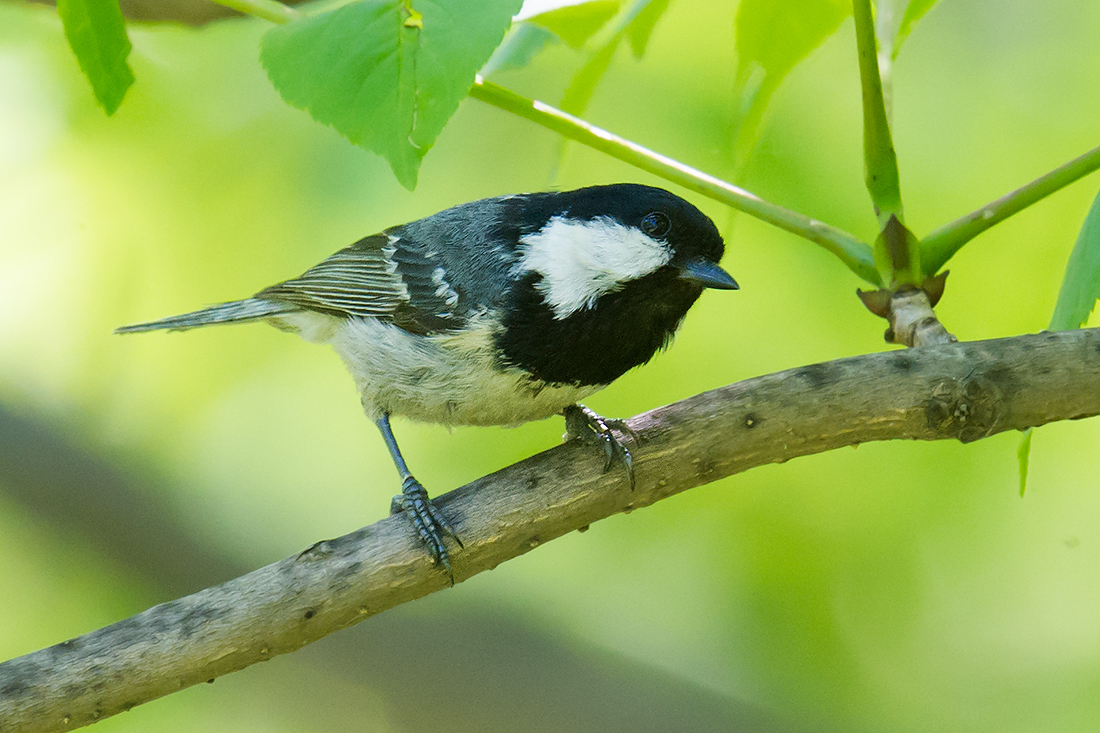
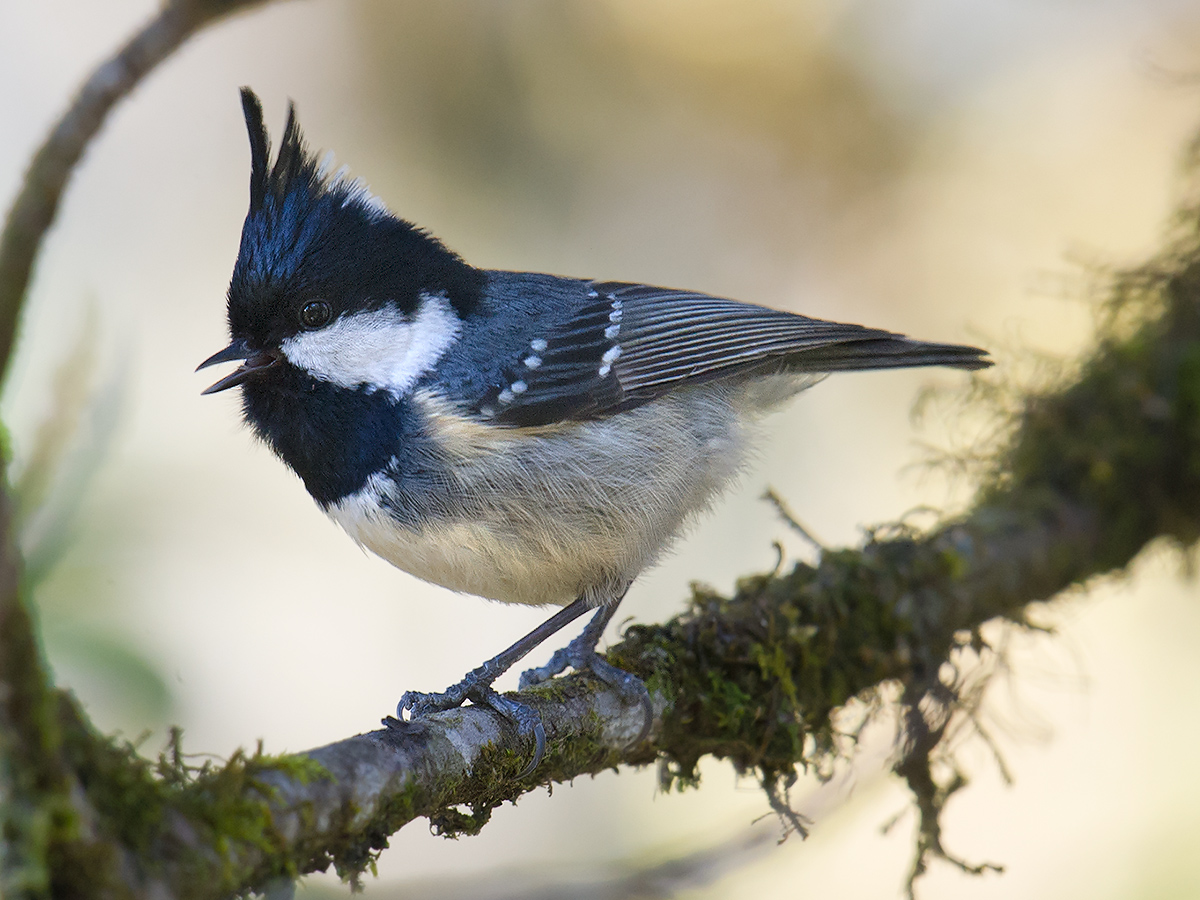
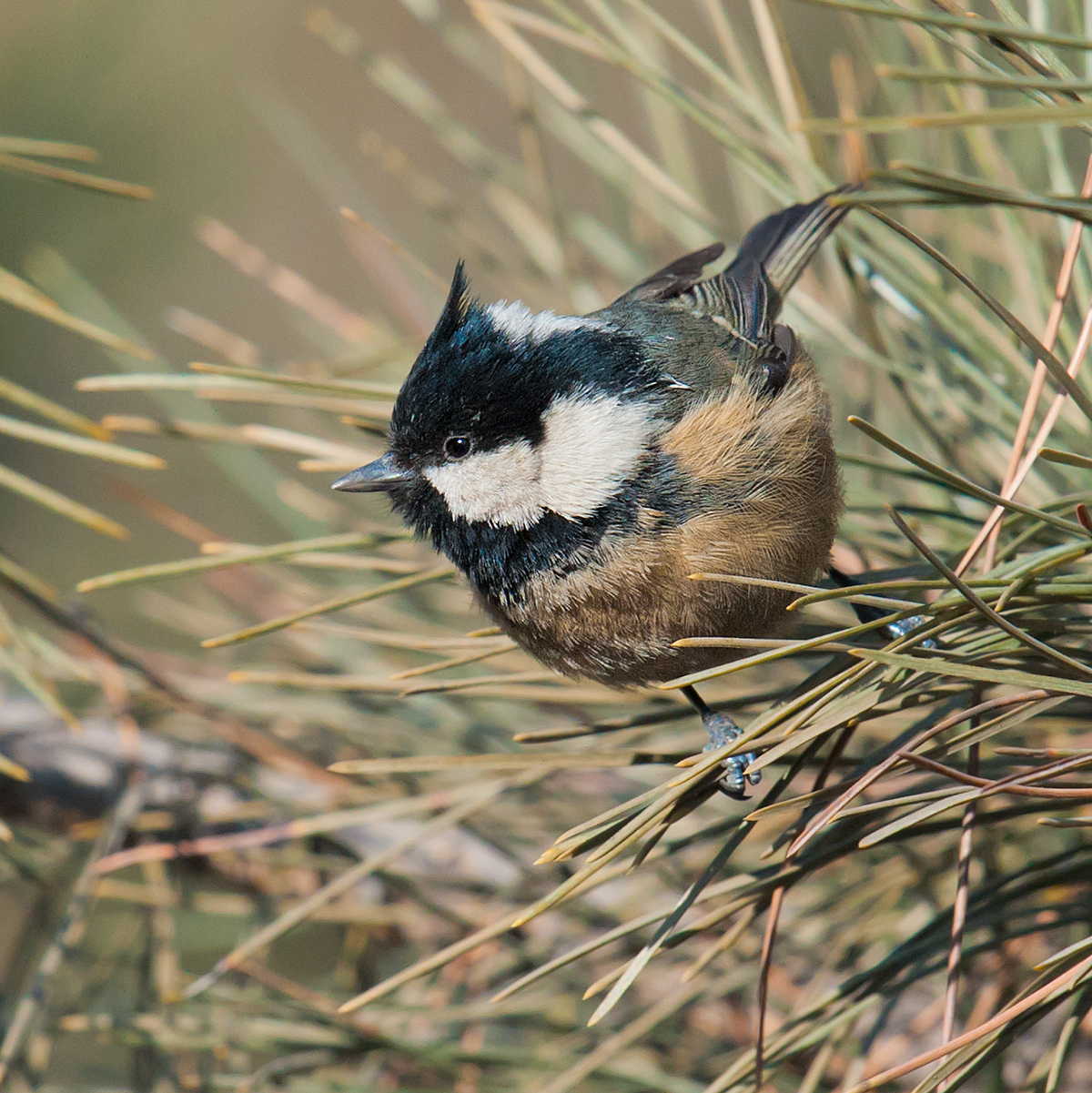
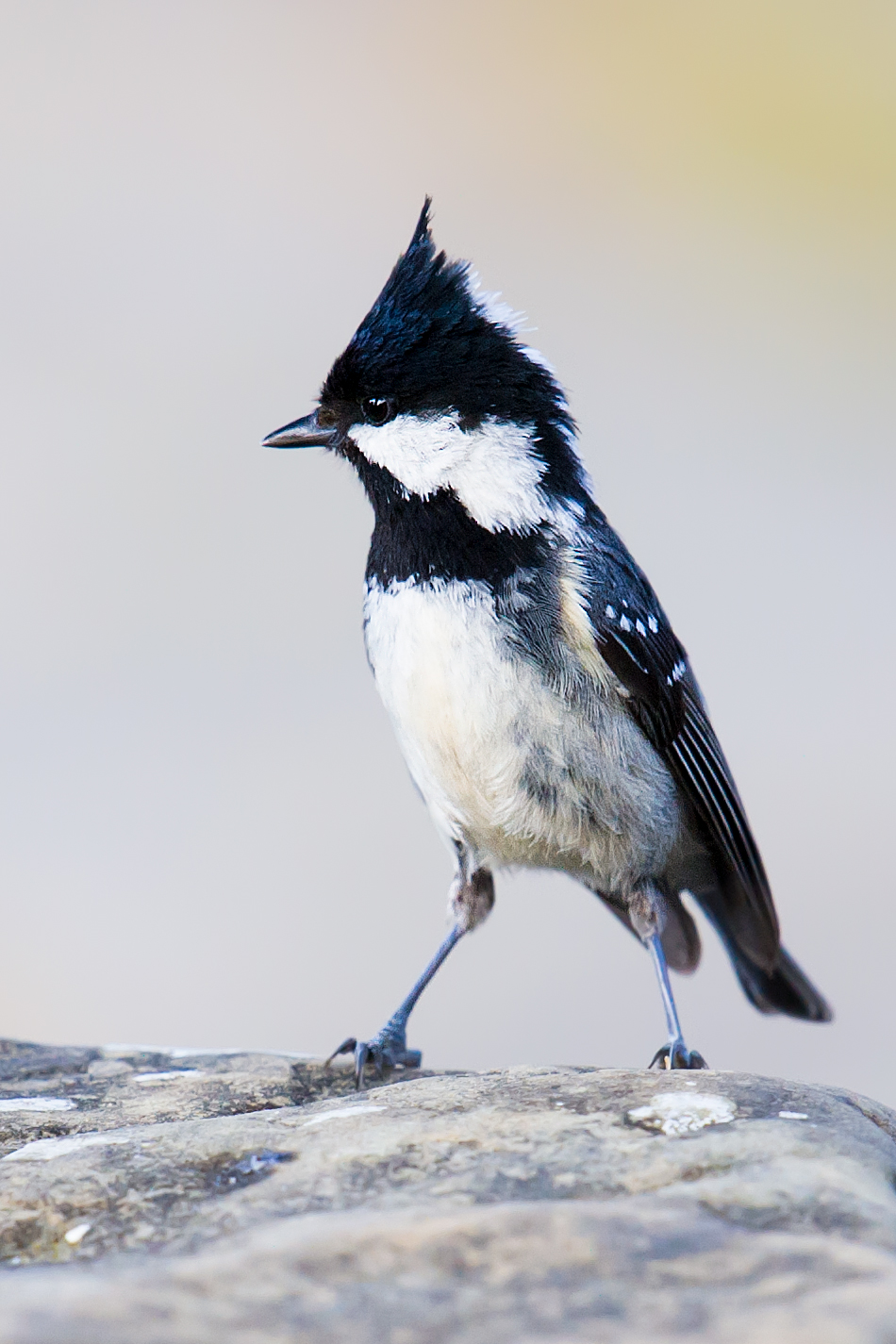
Coal Tit Periparus ater is a large-headed, short-tailed tit with a trans-Eurasian range—Ireland and North Africa to Kamchatka Peninsula and Taiwan. Six of the 21 ssp. in China: ater Heilongjiang to eastern Liaoning; pekinensis southern Liaoning to Shanxi, Hebei, and Shandong; kuatunensis southern Anhui, Zhejiang, and northwest Fujian; rufipectus western Xinjiang; and aemodius southern Gansu and southern Shaanxi south across Sichuan, western Hubei, and western Guizhou to southeast Tibet and western Yunnan. Also ptilosus mountains of Taiwan. HABITAT & BEHAVIOR Coniferous forests, from 800–4250 m (2,630–13,940 ft.). Resident, with some altitudinal shifts in response to food shortages; but caches food and is able to withstand even harsh winter weather. ID & COMPARISON Cap, neck-sides, and bib black. Has large white spot on nape and large white cheek patch. Mantle and back grey; base color of wings and tail blackish-grey, but grey feather edges give a largely grey appearance. White tips to median and greater coverts form double wingbars. Underparts variable; off-white with brownish tinge on flanks and vent in nominate and ptilosus, buffish in pekinensis and kuatunensis, and pinkish-buff (flanks) in aemodius and rufipectus; the latter also has cinnamon undertail coverts. Juvenile has yellowish cheeks and underparts, but the yellow plumage is never as bright as the yellow plumage of female and immature Yellow-bellied Tit Pardaliparus venustulus. Nominate has traces of a crest, pekinensis has a short crest, and kuatunensis, ptilosus, rufipectus, and aemodius have a well-developed crest (most pronounced in ptilosus). In eastern China and Taiwan is only tit with combination of prominent white patch on nape, white cheeks, and black bib that does not extend into a belly stripe (as in Japanese Tit Parus minor). Western China species Rufous-vented Tit Periparus rubidiventris and Rufous-naped Tit Periparus rufonuchalis lack wingbars, and Rufous-naped has bib extending to belly. Tits in genus Poecile lack white on nape and wingbars. BARE PARTS Bill black; feet grey. VOICE Highly varied repertoire includes thin, sweet calls reminiscent of Goldcrest. Songs generally higher-pitched, softer, and less metallic than Japanese Tit. — Craig Brelsford
SOUND-RECORDINGS
Coal Tit Periparus ater rufipectus, Baiyanggou (43.474525, 87.191575), Xinjiang, July, by Craig Brelsford (1:39; 19.1 MB)
Audio PlayerCoal Tit P. a. ater, song, hills (45.666389, 130.583631) south of Boli, Heilongjiang, China, elev. 450 m (1,460 ft.), June, by Craig Brelsford (0:15; 2.2 MB)
Audio PlayerCoal Tit P. a. ater, song, hills (45.666389, 130.583631) south of Boli, Heilongjiang, elev. 450 m (1,460 ft.), June, by Craig Brelsford (0:04; 1.7 MB)
Audio PlayerTHE TITS AND CHICKADEES OF CHINA
shanghaibirding.com covers every species in the family Paridae in China. Click any link:
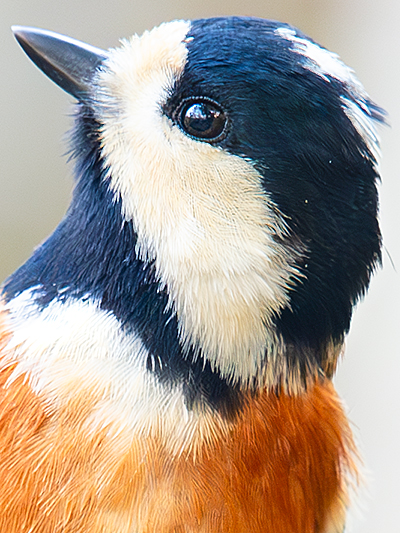
Fire-capped Tit Cephalopyrus flammiceps
Yellow-browed Tit Sylviparus modestus
Sultan Tit Melanochlora sultanea
Rufous-naped Tit Periparus rufonuchalis
Rufous-vented Tit P. rubidiventris
Coal Tit P. ater
Yellow-bellied Tit Pardaliparus venustulus
Grey Crested Tit Lophophanes dichrous
Varied Tit Sittiparus varius
White-browed Tit Poecile superciliosus
Pere David’s Tit P. davidi
Black-bibbed Tit P. hypermelaenus
Marsh Tit P. palustris
Sichuan Tit P. weigoldicus
Willow Tit P. montanus
Azure Tit Cyanistes cyanus
Ground Tit Pseudopodoces humilis
Great Tit Parus major
Japanese Tit P. cinereus minor, P. c. tibetanus, P. c. commixtus
Cinereous Tit P. c. hainanus
Green-backed Tit P. monticolus
Himalayan Black-lored Tit Machlolophus xanthogenys
Yellow-cheeked Tit M. spilonotus
See also these Taiwanese endemics:
Chestnut-bellied Tit Sittiparus castaneoventris
Yellow Tit Machlolophus holsti
ACKNOWLEDGEMENTS
Daniel Bengtsson served as chief ornithological consultant for Craig Brelsford’s Photographic Field Guide to the Birds of China, from which this species description is drawn.
